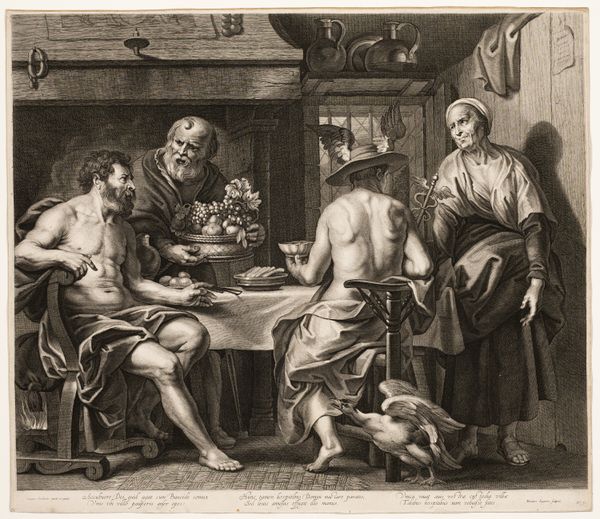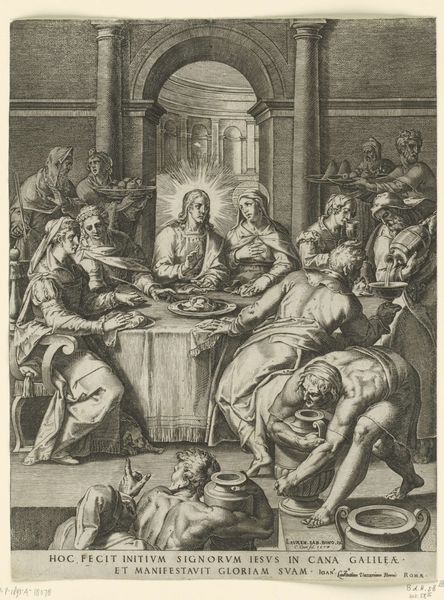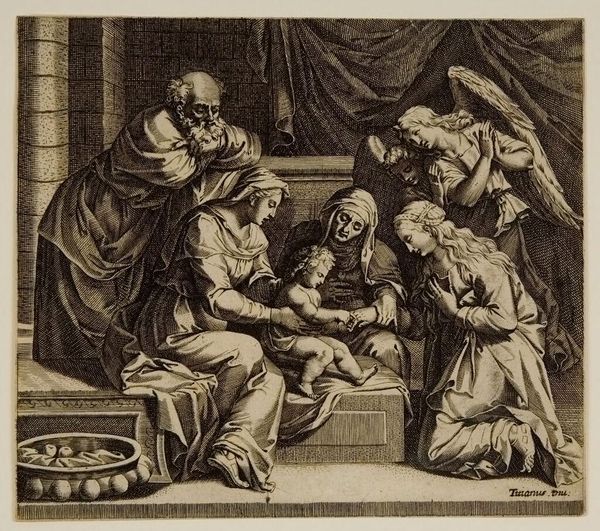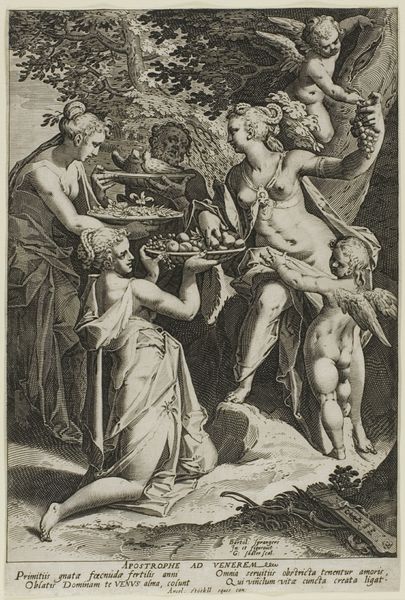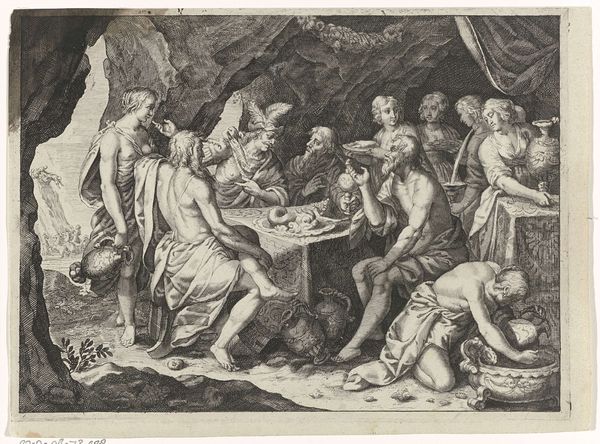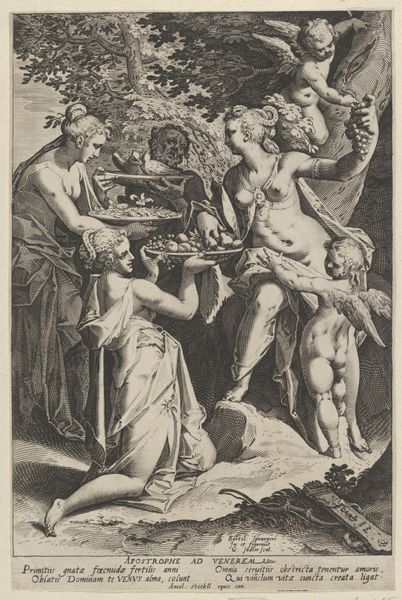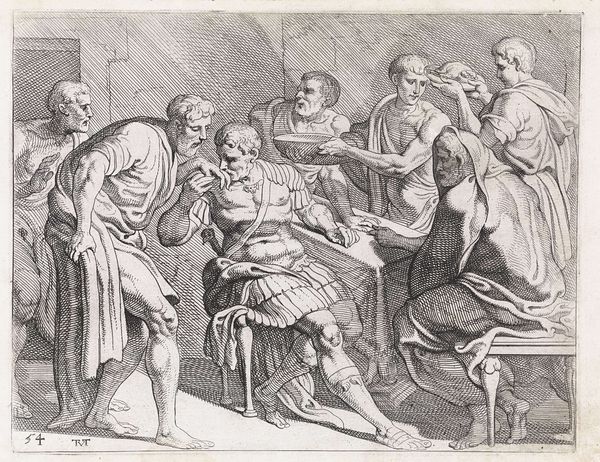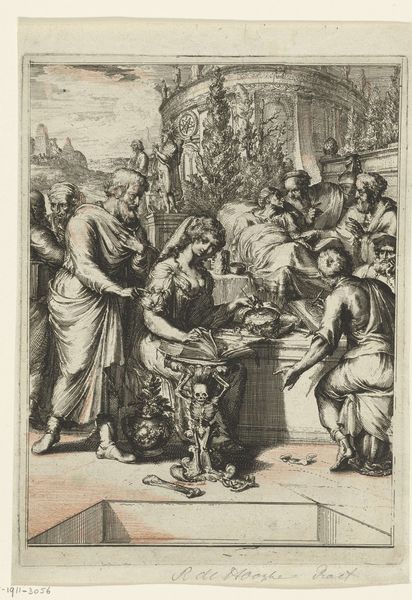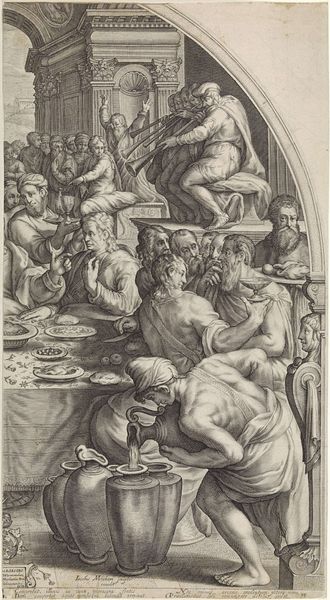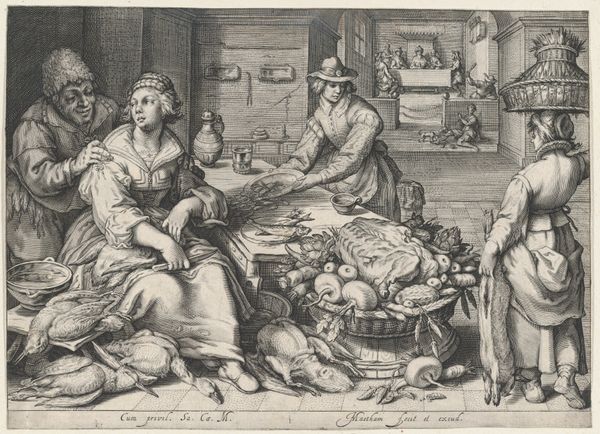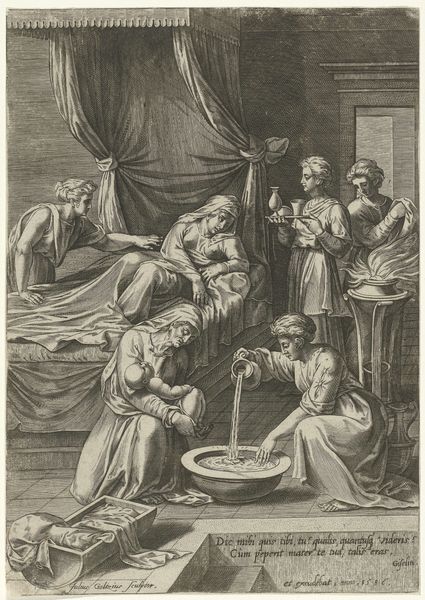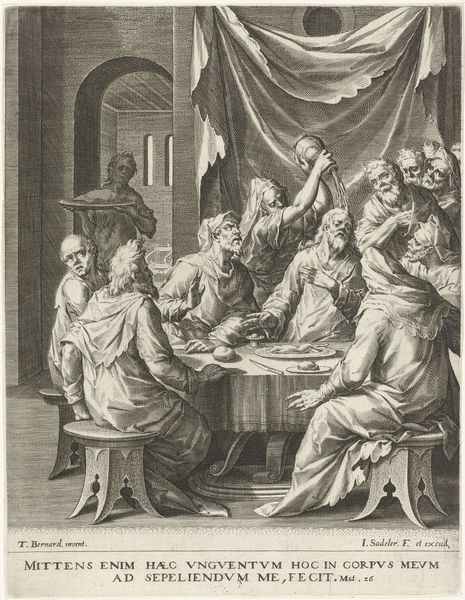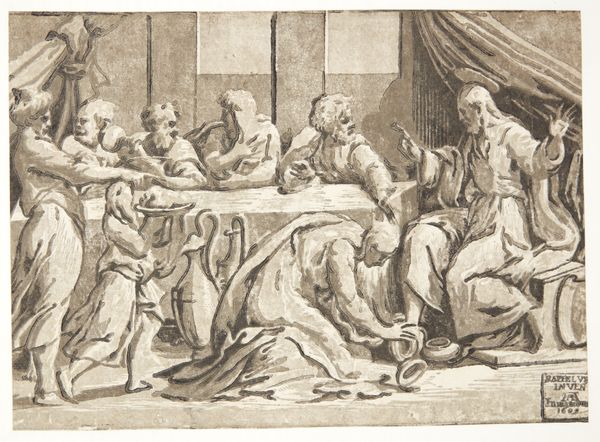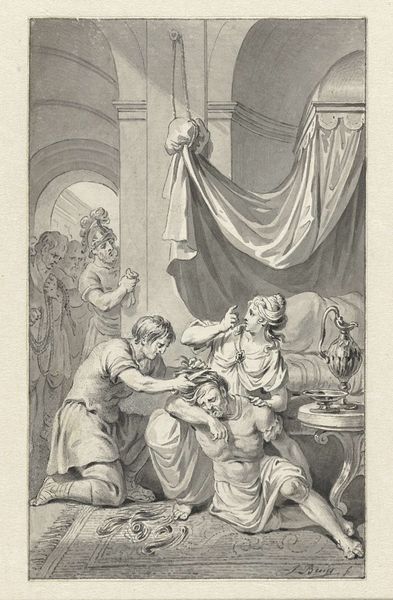
painting, oil-paint
#
narrative-art
#
baroque
#
painting
#
oil-paint
#
figuration
#
oil painting
#
mythology
#
genre-painting
Copyright: Public domain
Curator: Looking at this canvas by Palma il Giovane, created around 1600, you immediately get a sense of theatricality. The scene appears dramatically lit, almost stage-like. Editor: It strikes me as a morality play unfolding right before our eyes. I can almost feel the intoxicating pull of earthly pleasures emanating from the canvas. Curator: Absolutely. The painting is titled "Amusements of the Prodigal Son", a story popularized by the Bible. Consider how it might reflect anxieties in Venice during the artist's life? After the Council of Trent, art began to express the morals. This Baroque style, it’s also clearly trying to get to one's emotions, wouldn't you agree? Editor: Indeed. And il Giovane really lays it on thick, doesn’t he? Every object tells a story, or maybe, is more about wealth than an intended biblical parable. Consider the way Palma il Giovane frames the son with the wine bearer and the plates—very luxurious and expensive—that reinforces not just his lavish, yet ultimately fleeting lifestyle, but one about social currency and power, too. Curator: He clearly draws inspiration from earlier Venetian masters like Veronese, but introduces a distinct intensity. There are art critics who might compare him with Caravaggio... I can feel your disapproval brewing, and understand how the treatment of subject contrasts might strike an Iconographer as jarring. Editor: To me it represents, above all, vanity and temporality. The prodigal son's stupor almost suggests spiritual emptiness; or at least he is physically overwhelmed, as if it is an impending symbol for ruin. He becomes so immersed, he neglects his true values for superficial and hedonistic things. I interpret this work almost like a Memento Mori. Curator: Which leads to this being installed and held by Galleria dell'Accademia of Venice. It's hard to say if it had the exact effect il Giovane wished, considering its function in the present is mostly to signal an antiquated set of ideals from religious doctrines. Editor: Palma’s message is timeless. Its message still relevant and thought provoking regardless of any religious affiliation one may have or not.
Comments
No comments
Be the first to comment and join the conversation on the ultimate creative platform.
